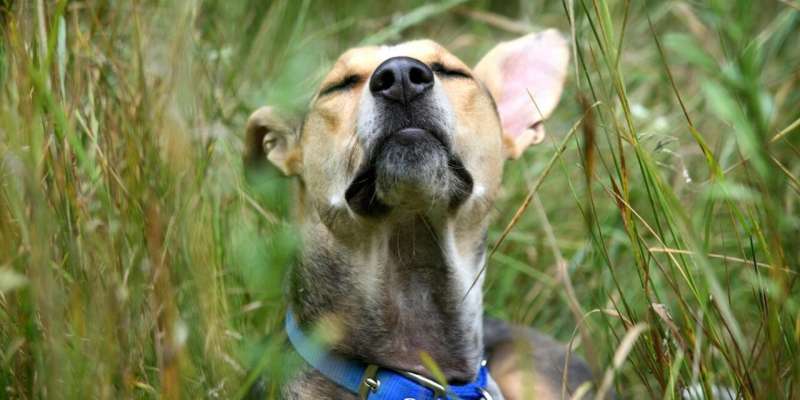Dogs experience the world primarily through their sense of smell. Recent research highlights how enhancing their environment with scents can significantly improve their well-being. According to a study published in Applied Animal Behaviour Science on November 2, 2025, providing scent-based activities can reduce stress and boredom in dogs, making it essential for pet owners to consider ways to enrich their canine companions’ lives.
The study emphasizes that dogs benefit from sniffing diverse scents, which not only engages their senses but also encourages relaxed behaviors. Here are six effective methods to create a more stimulating environment for your dog.
Engaging in Scent Work
Scent work classes are becoming increasingly popular among dog owners. This activity involves training dogs to locate hidden scents and signal their presence. Engaging in scent work has been shown to foster optimism in dogs and enhance their focus compared to other physical activities, such as agility training. Dogs trained in scent work have even participated in citizen science projects, contributing to research on invasive species and aiding in lung cancer detection.
Pet owners can introduce their dogs to scent work by teaching them to locate everyday items, such as a mobile phone or keys. This not only provides mental stimulation but also strengthens the bond between dogs and their owners.
Exploring Through Sniff-based Walks
Another effective approach is to take your dog on sniff-based walks, often referred to as “sniffaris.” These walks prioritize allowing dogs to explore their surroundings through scent without distractions from other animals or people. By focusing on their sense of smell, dogs can “read the local news” of their environment. Some pet owners may opt for rented “sniff spaces” or parks to facilitate this enriching experience.
Additionally, this type of walk is simple and cost-effective, making it accessible for all dog caregivers.
Creating a Scent-enriched Environment
Introducing various scents into your dog’s home can significantly enhance their exploratory behavior. Safe scents from animal or plant origins can encourage dogs to engage with their environment. For example, introducing items such as straw bedding, feathers, or even a brush used by another animal can provide stimulating olfactory experiences.
Plant scents like diluted lavender oil, vanilla, or fresh herbs can also create a calming atmosphere, promoting relaxation and reducing excessive barking.
Building Sensory Gardens
Sensory gardens are another innovative way to provide enrichment. These outdoor spaces are filled with pet-friendly plants and herbs, such as rosemary, basil, and catnip. Consulting with a veterinarian can help ensure the plants chosen are safe for your dog. A sensory garden allows dogs to explore a variety of textures and scents, enhancing their outdoor experience.
Implementing Scatter Search Feeding
Scatter search feeding is a fun and engaging activity that turns meal times into treasure hunts. By scattering food across a designated area, dogs can use their noses to locate their meals. Initially, owners can assist by pointing out treats and using verbal cues. This not only encourages foraging behavior but also provides mental stimulation during feeding.
Playing Scent Engagement Games
Indoor activities can also be designed to engage dogs’ sense of smell. Using a “snuffle mat” or activity mats with hidden pockets can provide hours of entertainment. Alternatively, pet owners can create a treasure hunt by hiding treats in cardboard boxes arranged in various formations throughout a room.
These scent-based activities are not only simple and low-cost but also immensely rewarding for dogs. By incorporating these methods into daily routines, pet owners can significantly improve their dogs’ quality of life, ensuring they remain happy and engaged.
In conclusion, enhancing your dog’s life does not require extensive resources or training. By focusing on their natural instincts and providing opportunities for scent exploration, pet owners can make a meaningful impact on their furry friends’ well-being.







